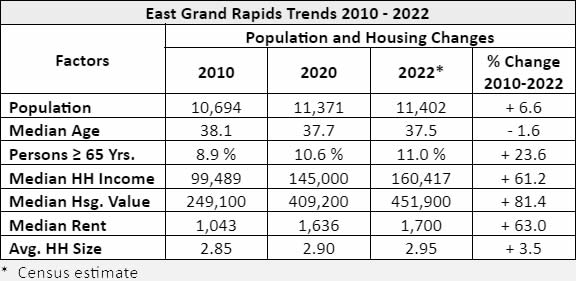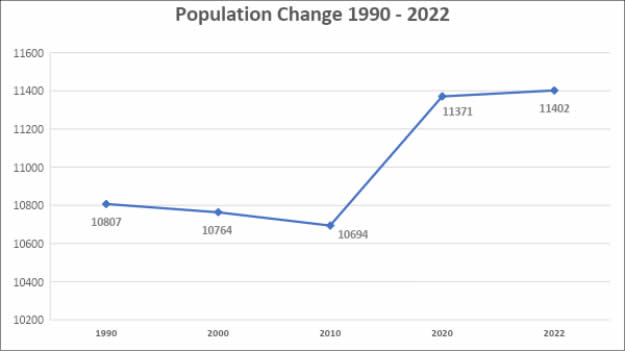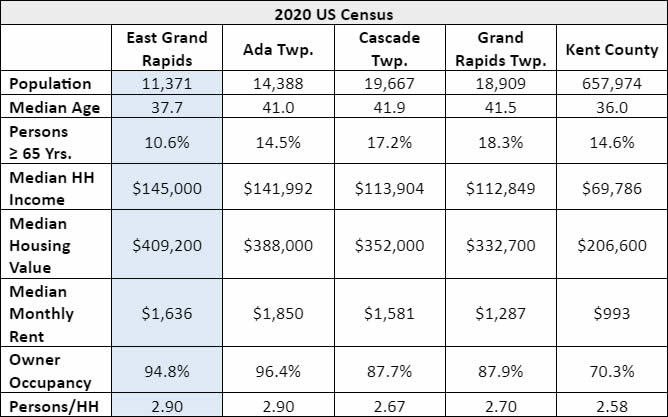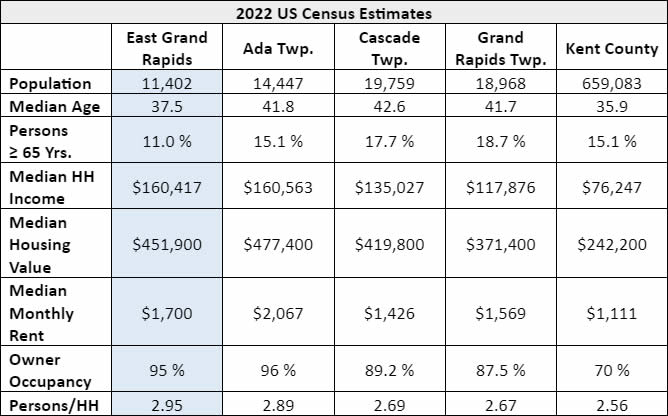Master Planning Our City
For the most part, East Grand Rapids is built out. There isn’t much vacant land to develop. Yet, the City continues to evolve, and change does occur. Planning in advance of such change is essential to avoid reacting to it. The City’s 2018 Master Plan provided a vision that has been aggressively pursued. Refinements of that Plan are now underway to address potential issues and new opportunities.
Why We Plan
For decades, East Grand Rapids has proactively planned its growth, infrastructure, and amenities…and has executed those plans. However, planning isn’t a static crystal ball view into the future. Conditions change; new opportunities arise; and unforeseen challenges present themselves. When such things occur, adjustments to the City’s Master Plan may be warranted.
Housing cost and lack of options pose challenges to our built-out community; a long-standing parochial school in the midst of a neighborhood has closed; and redevelopment of a prominent downtown site has potential implications for Gaslight Village and its surroundings. But challenges can be viewed as opportunities. By delving deeper into localized planning issues, an updated Master Plan will address these conditions with specific and detailed strategies for improvement.
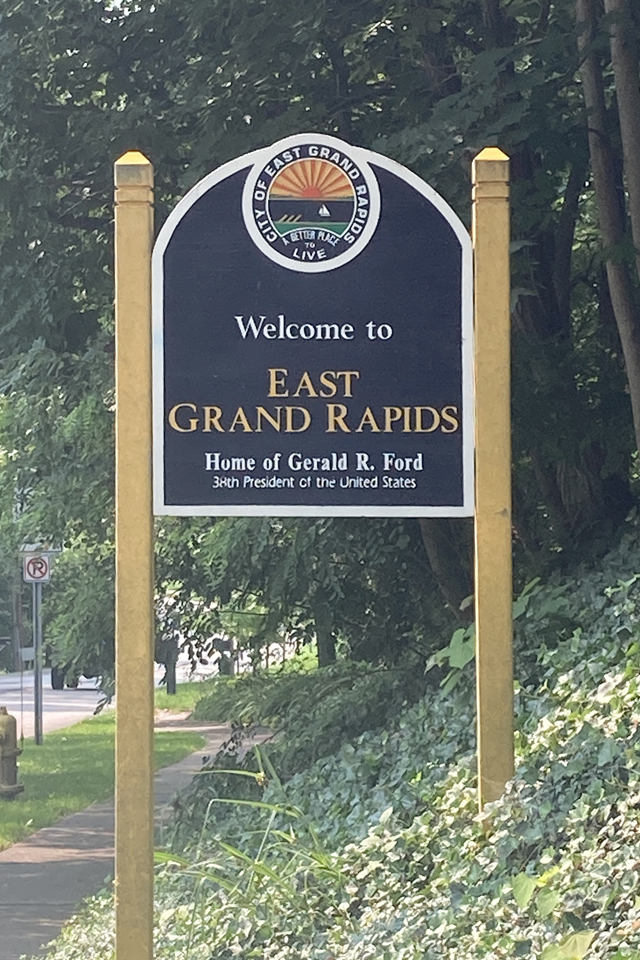
Snapshot of EGR
Recent US Census updates provide insights into trends and current conditions and how EGR compares with comparable metro area communities and Kent County:
- Unlike many small suburban communities, since 2010 East Grand Rapids has experienced modest growth rather than population decline.
- Also contrary to widespread trends, the City’s median age has fallen, though the percentage of residents 65 and over has increased. This suggests that those persons moving into the City are young families causing the decline in median age. Further support for this is found in the increase in household size which also runs counter to national and local trends.
* Census estimate
Among the neighboring communities with comparable socio-economic characteristics, East Grand Rapids has:
- The lowest median age and only slightly higher than the county median
- The lowest percent of persons 65 and older
- The second highest median household income, essentially tied with Ada Township
- The second highest median housing value
- The second highest median monthly rent
- The second highest owner occupancy rate
- The highest ratio of persons per household
These data suggest that, despite housing costs and a general lack of rental units, East Grand Rapids is a relatively “young” community whose residents predominantly live in family households. Only 5 % of housing units are renter-occupied, compared to approximately 11% in Cascade and over 12% in Grand Rapids Township.
While the percentage of residents 65 and older has risen over the past several decades (consistent with national trends), it remains low in comparison with neighboring communities and Kent County as a whole. This low percentage may suggest a lack of available options for empty nesters and retirees who wish to down-size and have few options other than to leave the City.
